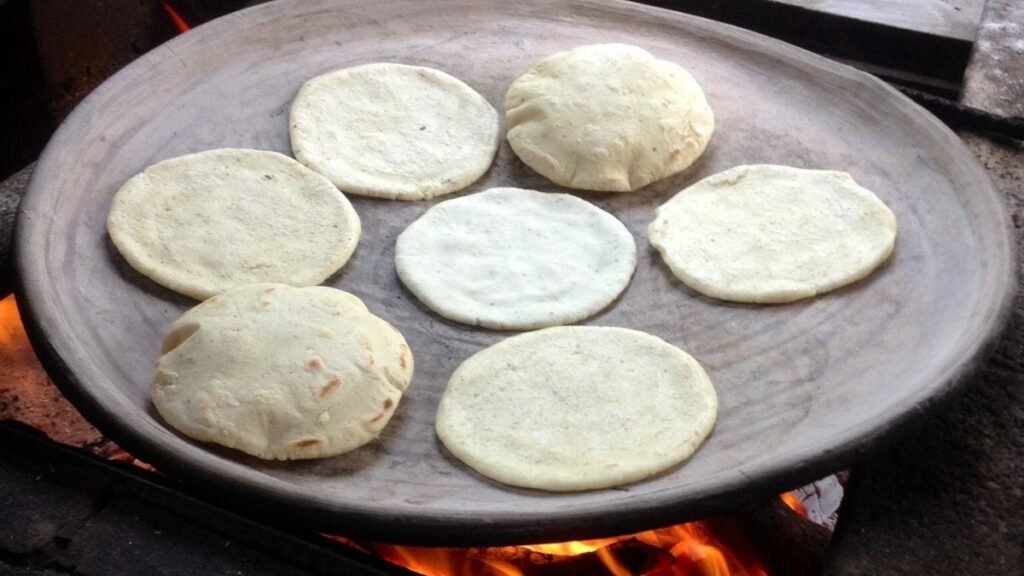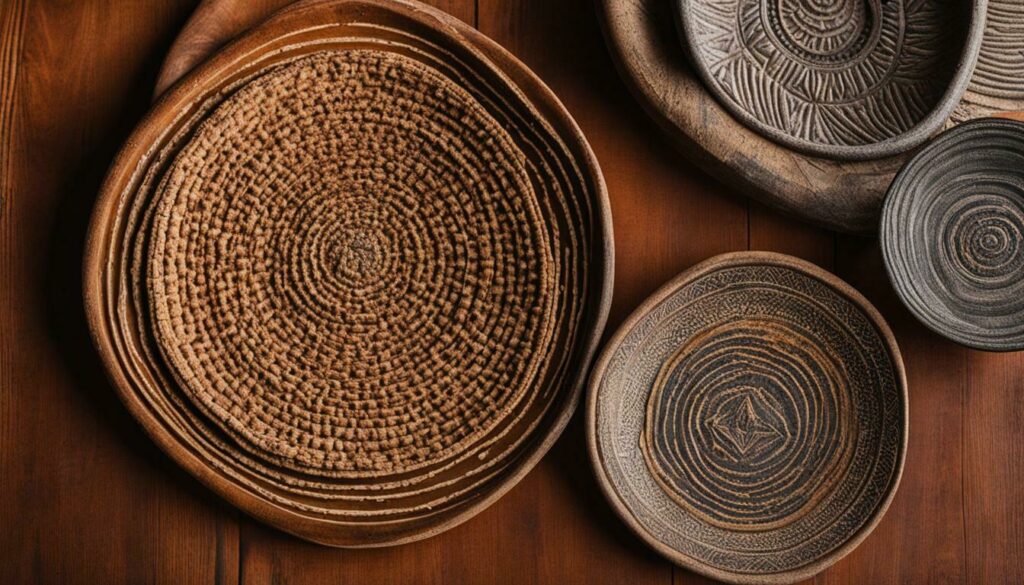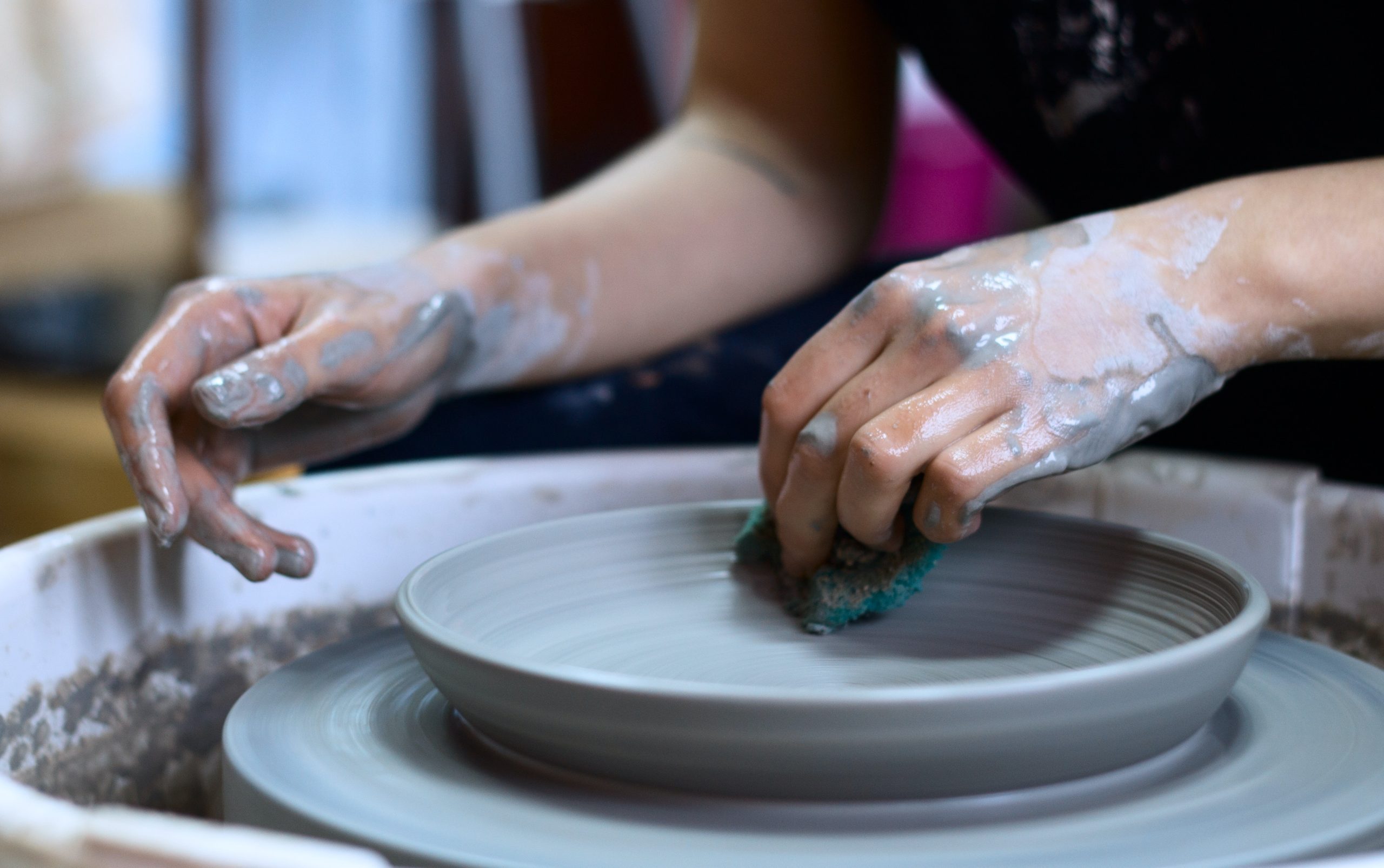Unlocking the Secrets of the Clay Comal: A Culinary Journey through History and Culture
In the vibrant tapestry of culinary traditions, few objects hold the essence of cultural heritage and gastronomic versatility as the comal. A comal is far more than a mere kitchen tool; it’s a vessel that has carried the flavors, stories, and warmth of generations across Mexico, Central America, and parts of South America. This smooth, flat griddle has left an indelible mark on the art of cooking and serves as a bridge between ancient techniques and modern tastes.
Thank you for reading this post, don't forget to subscribe!
A Taste of Tradition
The comal’s significance transcends its functionality. It’s a symbol of familial bonds, passed down from one generation to the next like a treasured heirloom. In indigenous and pre-Hispanic cultures, the comal is more than a utensil; it’s a legacy. As it moves from grandmother to mother to daughter, its seasoned surface becomes a canvas for creating culinary masterpieces.
Comals for home use come in various forms, but the most iconic are those crafted from heavy cast iron. These pieces are designed to fit over a stovetop burner, whether round or elongated oval. This versatile cookware is reminiscent of the American griddle and the Indian tawa, offering a common thread that unites kitchens around the world. The comal’s rich history goes beyond its physical form, encompassing the stories of those who have wielded it to turn simple ingredients into delectable dishes.
Savoring the Past

The history of the comal stretches back to the pre-Columbian era, where the early inhabitants of the Americas utilized earthenware comales to cook powdered-hominy tortillas over open fires. These humble pieces of clay bore witness to the transformation of ingredients into sustenance. Cacao beans, a precursor to our beloved chocolate, were also toasted on these comales, revealing the intricate connection between food and culture.
The term “comal” finds its roots in the Aztec Nahuatl word “comalli,” reflecting the linguistic tapestry woven into the fabric of the Americas. Originally, comales were crafted from thin ceramic, with slightly raised edges that cradled the precious contents being cooked. Archaeological evidence paints a vivid picture of their prevalence, with discoveries dating back to 700 BCE scattered across Central America. These earthenware comals are not just relics; they are the embodiment of culinary evolution and the heart of ancestral kitchens.
A Journey of Flavors
The comal’s significance is not solely tied to its history—it’s a vessel of versatility that continues to shape contemporary cuisines. From crafting the perfect tortilla to toasting spices and nuts, the comal transforms raw ingredients into flavor-packed revelations. Its smooth surface becomes a canvas where chefs and home cooks alike orchestrate symphonies of taste.
In Mexico, the comal is essential for creating the foundation of numerous dishes, particularly the iconic tortilla. Corn masa finds its true potential on the heated surface of the comal, undergoing a metamorphosis that elevates it from a simple dough to a vessel of culture. The ritual of preparing tortillas on a comal is an art form, a delicate balance of heat and skill that results in the emblematic staple of Mexican cuisine.
Crossing Borders and Blending Cultures
The clay comal’s influence extends beyond borders. In South America, a similar cookware known as the “budare” shares the comal’s purpose and utility. While names may change, the essence remains constant—an embodiment of the unifying power of food. The comal, akin to a cultural diplomat, brings people together through its ability to transcend linguistic and geographical boundaries.
Preserving the Craft
As time marches forward, the comal maintains its relevance, adapting to modern cooking techniques while retaining its historical essence. Yet, there is a call to preserve the craft of traditional comal-making. Indigenous communities in Mexico and Central America continue to create comales from barro (clay), using methods passed down through generations. These artisans breathe life into clay, molding it into vessels that stand as a testament to resilience, craftsmanship, and tradition.
How A Clay Comal Is Made
A traditional Mexican clay comal is a staple in Mexican cuisine, especially when it comes to making tortillas. The process of making a clay comal is fascinating and worth exploring in detail. To begin, the craftsmen gather the necessary materials. Clay, which is the primary material used, is sourced from specific regions known for its quality. These regions are carefully selected, as the type of clay used greatly affects the final product’s durability and performance. The clay is then meticulously cleaned, removing any impurities or debris, to ensure a smooth and even surface.
Once the clay is ready, the craftsmen start shaping the comal. A circular mold is used as a template to create the desired shape and size. The craftsmen skillfully manipulate the clay, using their hands and simple tools, to form a flat and round surface. They pay great attention to detail, ensuring the rim is raised slightly to prevent any spillage when cooking. After shaping the comal, it is left to dry naturally. This process is crucial as it allows the clay to harden and stabilize. The drying time can vary depending on the size and thickness of the comal, lasting from a few days to several weeks.
During this time, the craftsmen carefully monitor the comal, ensuring it dries evenly to prevent cracks or deformities. Once the comal is fully dry, it undergoes the firing process. Traditionally, the comal is fired in a wood-burning kiln, adding an authentic touch to the craftsmanship. The kiln is carefully prepared, and the comal is placed inside, ready to be heated to extreme temperatures.
This firing process fortifies the clay, making the comal more resistant to heat and less prone to cracking. As the clay comal is fired, it undergoes a fascinating transformation. The intense heat causes the clay to harden even further, creating a durable and long-lasting cooking surface. The craftsmen meticulously monitor the temperature, ensuring the comal is fired evenly to achieve the desired hardness and strength.
After the firing process, the comal is left to cool before the final touches are added. The craftsmen may polish the surface, making it smoother and more visually appealing. Some artisans even decorate the comal with intricate patterns or designs, adding a touch of personality and artistry to each piece. The finished clay comal is not only a practical tool for cooking but also a piece of traditional Mexican culture. Its craftsmanship represents centuries of knowledge and skill passed down through generations.
When using a clay comal, one can truly appreciate the artistry and craftsmanship behind its creation, enhancing the overall cooking experience and connecting to the rich cultural heritage of Mexico.
In Conclusion
The clay comal is more than a utensil; it’s a narrative woven into the culinary tapestry of the Americas. From its humble origins as a thin ceramic piece to the robust cast iron comales of today, it has shaped the way we cook, eat, and connect with our roots. As we savor the flavors it imparts to our favorite dishes, let us also savor the stories it carries—the stories of grandmothers, mothers, and daughters, of cultures intertwined, and of the profound impact of a single cooking implement. The comal, a vessel of history and culture, continues to bridge time and taste, ensuring that the past’s flavors remain alive in the present and beyond.
The clay comal stands as a testament to the intricate connection between history, culture, and cuisine. From its ancient origins to its modern-day adaptations, the comal continues to shape the way we cook and share food, transcending borders and generations. Its ability to preserve tradition while embracing innovation makes it a truly remarkable tool in the culinary journey.

F.A.Q. – Clay Comal
Question 1. What is a comal and how is it used in cooking?
A comal is a smooth, flat griddle primarily used in Mexico, Central America, and parts of South America. It serves various culinary purposes such as cooking tortillas and arepas, toasting spices and nuts, searing meat, and preparing a wide range of foods. This versatile cookware is a staple in these regions’ kitchens, reflecting their rich cultural and gastronomic heritage.
Question 2. Is a comal similar to any other cookware?
Yes, the comal shares similarities with other cooking tools. In South America, it’s referred to as a “budare.” Additionally, it bears resemblance to the American griddle and the Indian tawa. These resemblances often lead to interchangeable use and naming across cultures, showcasing the universal nature of cooking techniques.
Question 3. What materials are comals made from, and how are they typically used at home?
Comals used at home are usually crafted from heavy cast iron, providing excellent heat retention and distribution. They are sized to fit over a single stovetop burner (round) or two burners arranged front to back (elongated oval). This design allows for even cooking and flexibility in the kitchen. The cast iron comal’s durability and versatility make it a preferred choice for various cooking tasks.
Question 4. Can you share the historical significance of the comal?
The comal’s history traces back to the pre-Columbian era. Early inhabitants used earthenware comales to cook powdered-hominy tortillas over open fires. These cookware pieces were also integral in toasting cacao beans, showcasing the breadth of their applications. The term “comal” itself is rooted in the Aztec Nahuatl word “comalli.” Over time, comals have evolved from thin ceramic pieces to more robust and functional cast iron versions.
Question 5. Are there any cultural practices associated with the comal?
Absolutely. In many indigenous and pre-Hispanic cultures, the comal carries a legacy that’s passed down through generations. It’s a symbol of family traditions and connection, often handed down from grandmother to mother to daughter. The idea behind this practice is that a comal that’s been tempered over many years of use will heat up faster and provide cleaner cooking. This practice speaks to the deeply rooted cultural ties that the comal embodies.
Question 6. How is the comal linked to the preparation of tortillas?
The comal plays a crucial role in the preparation of tortillas. In Mexico, for example, the comal is essential in creating the foundation for tortillas. Corn masa, the key ingredient for tortillas, is skillfully transformed on the heated surface of the comal. The comal’s heat and even cooking allow the masa to develop its distinct taste and texture, resulting in the beloved tortillas that are central to Mexican cuisine.
Question 7. Can you elaborate on the cultural significance of the comal in indigenous communities?
In indigenous communities of Mexico and Central America, the comal is more than a cooking tool—it’s a vessel of cultural identity. Crafted from barro (clay), some comals maintain their traditional form and methods. These handmade comales are a testament to the artisans’ craftsmanship and a tangible link to their cultural heritage. The comal embodies the resilience and continuity of these communities’ culinary traditions.
Question 8. How does the comal bridge cultures and cuisines?
The comal’s influence extends beyond geographical borders. While its name and form may vary, the concept remains consistent across cultures. Whether it’s the South American budare or the Indian tawa, these cooking tools share a common purpose—to transform raw ingredients into flavorful dishes. This ability to transcend cultural barriers makes the comal a unifying symbol in the world of cooking.
Question 9. Are there any resources for learning more about comals and their use?
Yes, for those interested in delving deeper into the world of comals and their significance, various resources are available. Books like “Knack Mexican Cooking: A Step-by-Step Guide to Authentic Dishes Made Easy” by Chelsie Kenyon and “Tortillas: A Cultural History” by Paula E. Morton offer insights into Mexican cuisine and the role of comals within it.
Question 10. How can I contribute to expanding my knowledge about comals?
Apart from books, online platforms like Wikipedia offer comprehensive information on the history, use, and cultural relevance of comals. Exploring articles and references about cooking appliances, Latin American cuisine, and Mesoamerican culture can provide a broader perspective on the comal’s significance in the culinary world.

